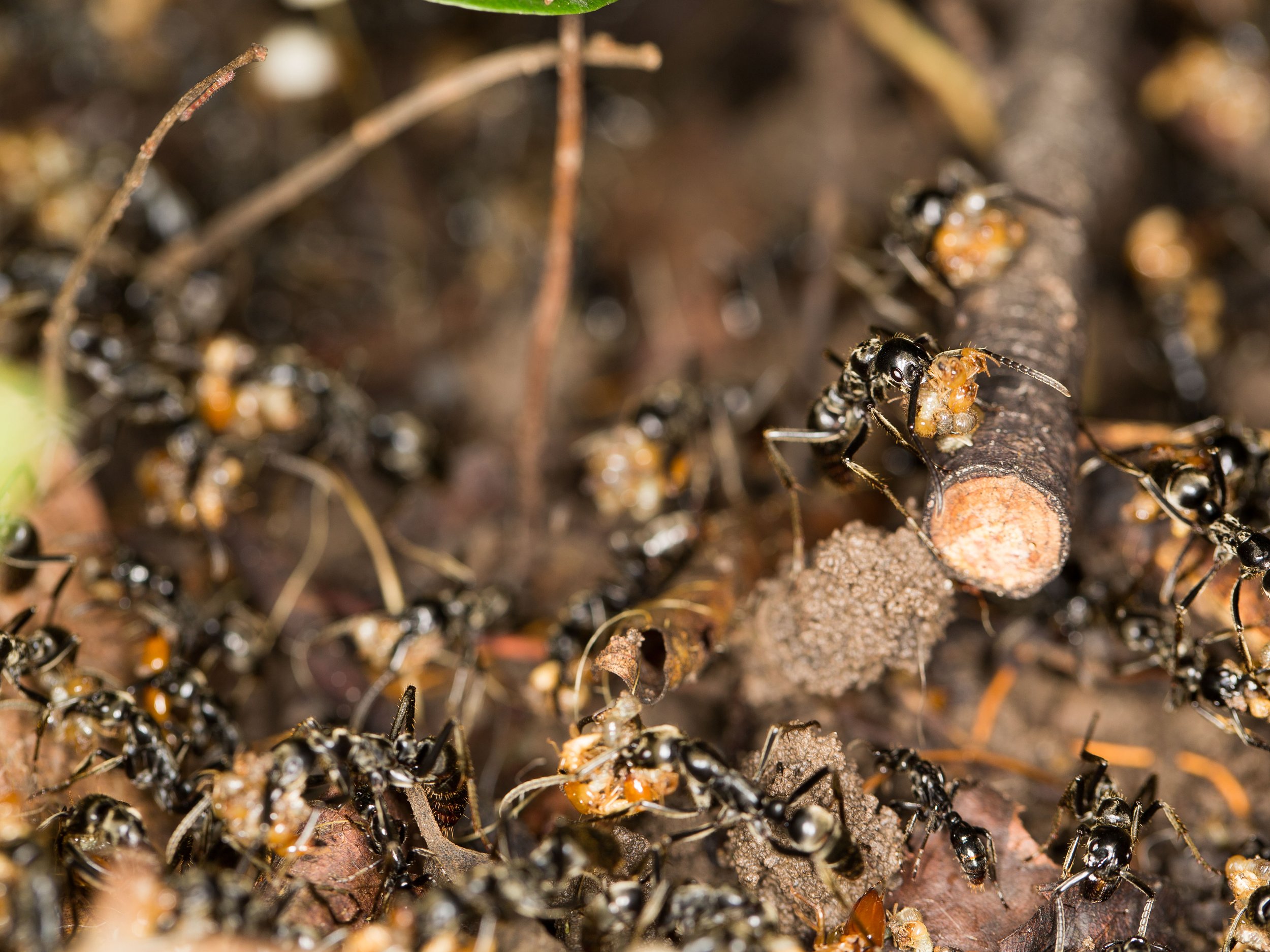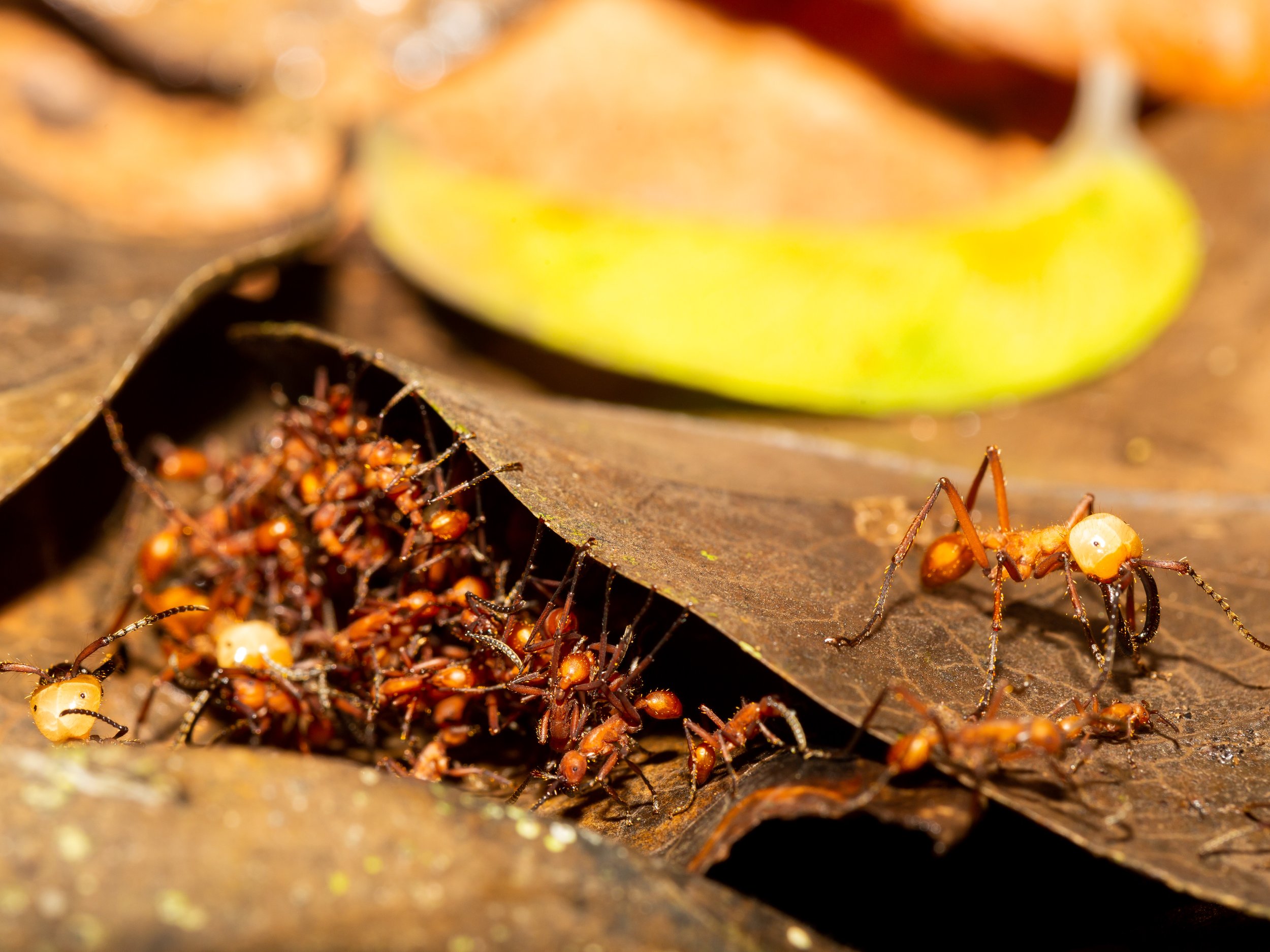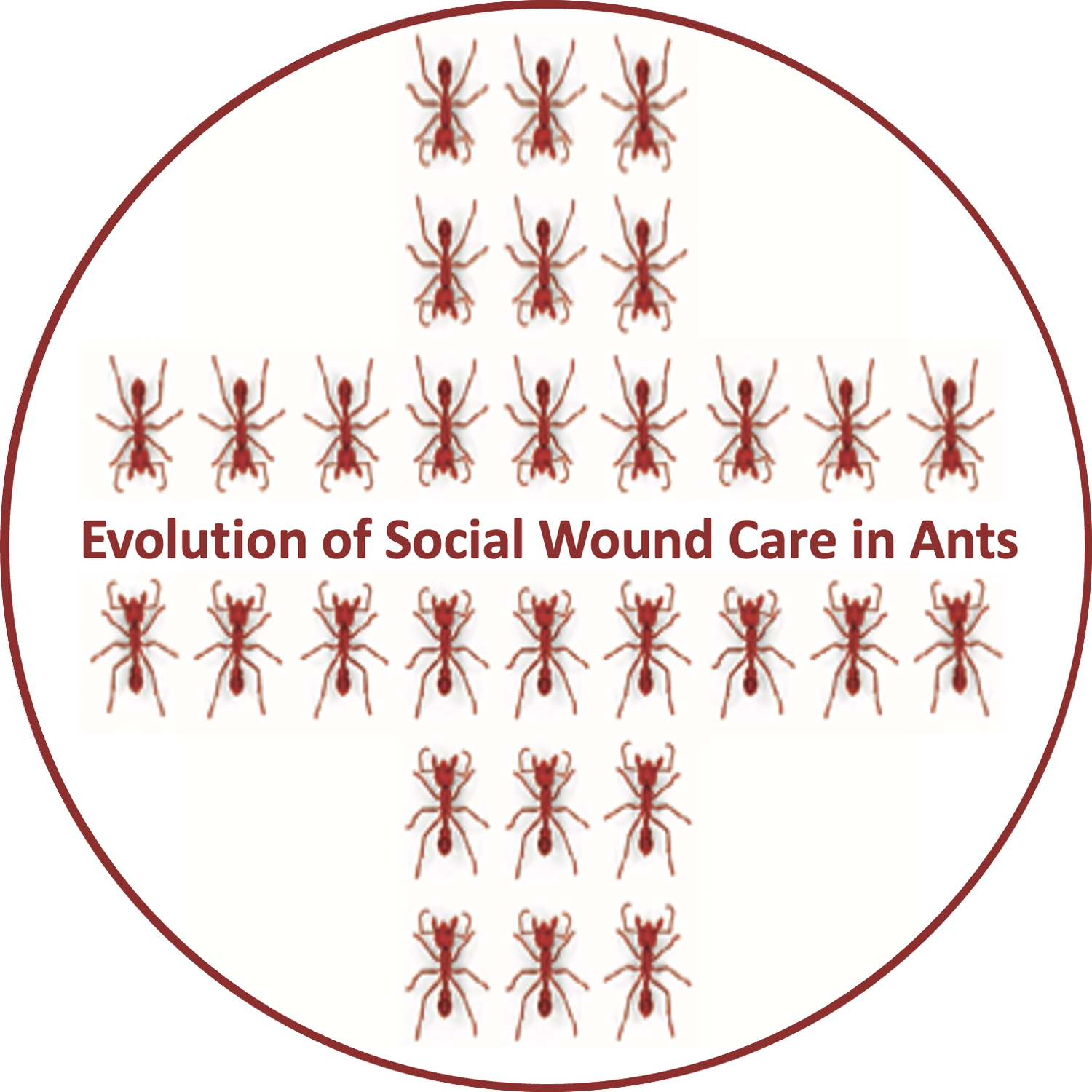Social Wound Care in Ants
Emmy Noether Programme
Understanding how social animals combat diseases could offer promising new insights into our own responses to health threats. Over the past decade, the field of social immunity has become increasingly important to understand the evolution and interactions of social organisms. It is now considered to be one of the basal traits necessary for sociality to evolve in insects as it allows overcoming increased disease risks caused by high densities of related individuals in a confined area. Research in social immunity has also led to new insights on disease spread in complex interaction networks and helped us discover new antibiotics , allowing us to better understand and combat epidemics in human societies.
The field of social wound care derives from social immunity, focusing on how social insects take care of injured individuals in the colony. These injuries can be cut off extermities or other animals clinging on to the body.
In this project, funded by the German Research Foundation (DFG), we focus on better understanding how ants of the genus Eciton and Megaponera care for their injured (Part 1 and 2). What the driving factors are for the evolution of wound care behaviour in both genera and how they differ across populations and species. Afterwards we want to identify the communication pathways used to call for help and detect infections (Part 3) and what compounds and body parts are used to combat infections (Part 4). In the end we hope to synthesize all of this information to gain a better understanding for the evolution of social wound care in ants (Part 5).

Social Wound Care in Ants
Megaponera
Open wounds pose a major health risk for individuals. Recent discoveries in M. analis showed that other members of the group do not only rescue injured individuals from danger, but also are capable of detecting infected wounds and treating them with antimicrobial compounds (Frank et al. 2017, Frank et al. 2018, Frank et al. 2023). These behaviours have until now only been described in one population of M. analis (in Côte d’Ivoire), whereas it is absent in another population of the species in Mozambique where it hunts less pugnacious prey.
In this project we therefore focus on understanding what factors influence the presence/absence of wound care behaviour across populations and what effects this has on the chemical compounds they use to treat such wounds.
This project is funded by the Emmy Noether Grant (DFG) and part of Vibhuti Bhat’s PhD.

Social Wound Care in Ants
Eciton
The neotropical army ant genus Eciton has been extensively studied as a model system for army ant like behaviour, which is defined by a synchronised brood phase, nomadic lifestyle and mass raids. The Eciton genus is a perfect model system to further analyse the evolutionary constraints of rescue behaviour. There are nine species in the genus with varying degrees of prey specialisation, colony size, worker size and foraging strategies.
Our preliminary results in Ecuador and Costa Rica suggest that the presence of social wound care behaviour on the spot occurs in E. rapax, E. burchellii and E. hamatum. Considering the large evolutionary distance between these species (~12 million years), we want to study if the behaviour has evolved convergently in certain Eciton species or if it is a basal trait of the genus. For this, the behaviour is being studied in more detail in the three species, identifying similarities and differences and also expanding the observations to other army ant species.
This project is funded by the Emmy Noether Grant (DFG) and part of Juan José Lagos Oviedo’s PhD.

Social Wound Care in Ants
Dinoponera grandis
Dinoponera is a neotropical genus that currently consists of 8 species. These ants have a body size ranging from 3 to 4 cm, making them the largest ants in the world. Unlike most ant species, Dinoponera has lost the specialized queen caste, and workers are capable of mating and laying fertile eggs. Within the colony, females compete for reproduction through various dominant interactions, establishing a hierarchical structure. The alpha female, resulting from these interactions, is the only one in the colony that can mate and lay eggs.
Although colonies of this genus are small, some species of Dinoponera, such as D. grandis in Argentina, can achieve remarkable abundance and biomass. Foragers of D. grandis have route fidelity, and engage in hunting various prey, including small vertebrates, as well as scavenging for food in the leaf litter. The large size, high abundance, and complex social interactions of Dinoponera ants provide an excellent opportunity to study wound care behavior in queen-less ants. Therefore, our focus in this project is to understand in detail the behavioral and chemical social communication in D. grandis, and how social factors that structure Dinoponera colonies can influence wound care behavior.
This project is conducted by Dr. Priscila Hanisch.

Social Wound Care by Ants on Plants
Pseudomyrmex ferruginea
In this project, we want to analyse how woundcare can occur across species by looking beyond the superorganism. In the symbiosis between the ant Pseudomyrmex ferruginea and their host tree Vachellia allenii, the ants defend the tree from herbivores, while the tree offers food and housing for the ants.
Our preliminary results show that interkingdom woundcare in this relationship is present and by the end of this project, we will have the first detailed description of interkingdom woundcare. To achieve this, we will use a multidisciplinary approach, integrating chemical ecology, proteomics, microbiology, and behaviour. We will identify the proteins and chemical compounds relevant for its success and how myrmecophyte plants co-evolved with the ants to optimise woundcare. These results could yield novel chemical compounds to combat plant pathogens, redefine what encompasses the social immune system, change our understanding of what mutualistic relationships entail and further challenge the question on what is necessary for empathic behaviours to evolve.
This project is financed by the Hector Fellow Academy as part of the Hector RCD Award given to Erik T. Frank and part of Melina Kienitz’s PhD.

Evolution of Amputation Behaviours in Ants
Camponotus et al.…
In this project, we focus on the unique behaviour of medical amputations in ants, as described in Camponotus floridanus.
Why do some ant species conduct antimicrobial wound care while others amputate the extremities? What are the physiological constraints and advantages of each strategy? This project focuses on the evolution of medical amputation behaviours in ants by studying different species known to exhibit the behaviour.
This project is financed by the DFG and conducted by Seiji Fujimoto
(C) Background picture by Bart Zijlstra

Social Wound Care in Primates
Pan troglodytes troglodytes
In collaboration with the primatology group of Prof. Simone Pika and Dr. Tobias Deschner at the University of Osnabrück we want to identify how chimpanzees treat the wounds of their groupmembers. In particular, how a novel behaviour of applying flying insects on wounds is effective in wound healing (link to publication).
Preliminary results suggest a focus by the chimpanzees on flies. How the chimpanzees identify the insect and more importantly why they choose it. Is the main focus of this project. We will analyse both the chemical content of different insect species used in this context and their antimicrobial activity. At the same time, we will identify the limits of the “taxonomic” capabilities of chimpanzees in their species choice for wound care.
This PhD Project is a collaboration between the University of Würzburg and the University of Osnabrück and part of Harsith K. Guruswamy’s PhD.
(C) Background picture by Tobias Deschner

Clonal Raider Ant Pheromones
Ooceraea biroi
In collaboration with the group of Prof. Daniel Kronauer at the Rockefeller University we aim to create a pheromone library for the clonal raider ant O. biroi. By using Gas-chromatographic Mass-spectrometry (GC-MS) analyses, coupled to a thermodesorption or Electroantennogramm unit. This allows us to reach the necessary resolution to identify the pheromones these ants use to communicate with each other.
Further analyses conducted at the Rockefeller University then allow us to understand how these pheromones are processed in the brain.






